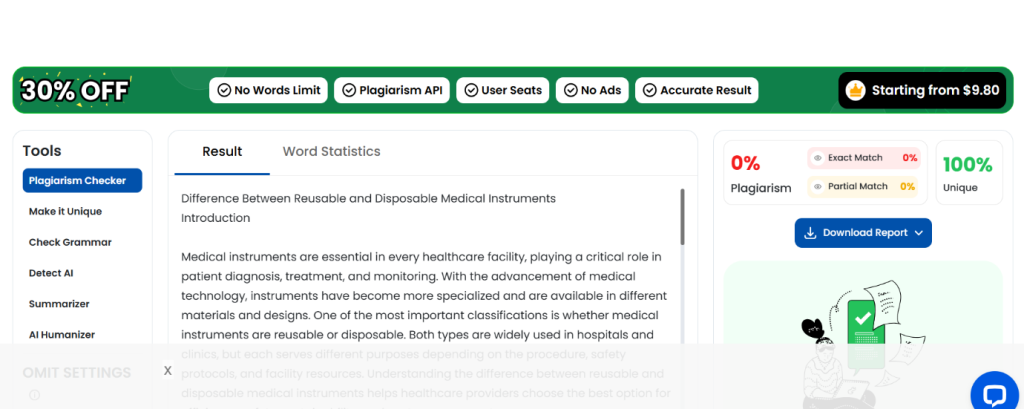
Artificial Intelligence (AI) and the Internet of Things (IoT) are transforming the medical equipment industry faster than ever before. These technologies are reshaping how diseases are diagnosed, how patients are monitored, and how hospitals operate. As demand for smarter and more connected healthcare solutions grows, the integration of AI and IoT is becoming essential rather than optional. This article explores the future of AI and IoT in medical equipment and how these advancements will shape global healthcare in the coming years.
AI has already proven its value in improving healthcare accuracy and efficiency. Machine learning and advanced algorithms can analyze medical data faster than human interpretation alone, giving healthcare providers deeper insights into a patient’s condition. The next era of AI in medical equipment focuses on predictive analytics. Devices equipped with AI can identify potential health risks before symptoms get worse, allowing earlier intervention and better outcomes. Automated diagnostic systems are also reducing the burden on specialists by assisting with reading scans, detecting abnormalities, and suggesting treatment options.
IoT enables medical devices to communicate with each other and with healthcare systems. Connected devices collect real-time data from patients and transmit it securely to doctors, even when patients are at home. This shift makes healthcare more continuous and reduces unnecessary hospital visits. As IoT advances, more equipment such as patient monitors, infusion pumps, ventilators, and wearable sensors will operate within integrated smart healthcare networks. This connectivity improves workflow, enhances patient safety, and enables remote care on a larger scale.
Remote monitoring has expanded significantly after the pandemic and will continue to grow. AI-powered IoT devices continuously track vital signs and alert healthcare professionals instantly if abnormalities occur. For patients with chronic conditions like heart disease or diabetes, this technology supports proactive care and helps prevent emergency situations. Remote monitoring will also reduce hospital overcrowding and enable elderly patients to receive proper care without needing to relocate to healthcare facilities.
Robotic-assisted surgeries are becoming more common as AI technology improves precision and automation capabilities. Future operating rooms will use AI-based guidance to help surgeons make better decisions during procedures. Real-time analytics, guided instrument control, and automated error detection will make surgeries safer and more successful. Some robots are even capable of performing routine surgical tasks autonomously under physician supervision. These advancements reduce surgical fatigue and enhance patient outcomes.
In hospitals, IoT devices are improving operational activities such as equipment tracking, environmental monitoring, and inventory management. Smart sensors detect when supplies are low and automatically reorder them. Connected hospital beds can monitor movement and prevent falls. IoT-supported sterilization equipment ensures proper tracking and maintenance of infection control processes. These improvements save time for hospital staff and reduce risks to patients.
As more devices become connected, cybersecurity becomes a major concern. Health data is highly sensitive and must be protected from cyber threats. Medical device manufacturers are already integrating advanced security systems to secure patient information. The future will see more encrypted communication, stronger firewalls, and continuous monitoring systems embedded in medical equipment. Regulatory authorities will also enforce comprehensive security standards to safeguard patient safety and data integrity.
Automated drug delivery systems powered by AI can calculate precise medication doses based on real-time patient data. Smart infusion pumps can detect errors and stop harmful medication delivery. AI-guided respiratory equipment automatically adjusts oxygen levels to meet changing patient needs. These advancements reduce human error and ensure that every patient receives proper treatment tailored to their health condition.
IoT-connected devices can monitor their health and performance continuously. Predictive maintenance alerts technicians when repairs are needed to avoid unexpected breakdowns. This ensures that critical equipment such as ventilators, dialysis machines, and defibrillators remain available and functional. Reduced downtime lowers hospital costs and ensures uninterrupted patient care.
The most promising advancements will emerge when AI and IoT work in combination. IoT devices will collect massive amounts of data, and AI will analyze it to provide actionable insights. Together, they will enable personalized treatment, smart hospital systems, and more efficient healthcare delivery. The future may also include AI-powered digital twins, where virtual replicas of patients help predict outcomes and test treatments safely before applying them in real life.
The future of AI and IoT in medical equipment is full of opportunities for better healthcare. These technologies will make medical devices smarter, more accurate, and more connected, helping doctors provide proactive care and improving patient outcomes. From remote monitoring to intelligent surgery systems, the possibilities are expanding rapidly. However, success depends on strong data security and proper regulatory compliance. As AI and IoT continue to evolve, they will play a central role in shaping a modern healthcare system that is efficient, safe, and patient-focused.
If you are unable to find your desired product on our website, please don’t hesitate to contact us through the Contact Form. Our team will be happy to assist you with product availability, custom requests, or further information.
Agree Decline